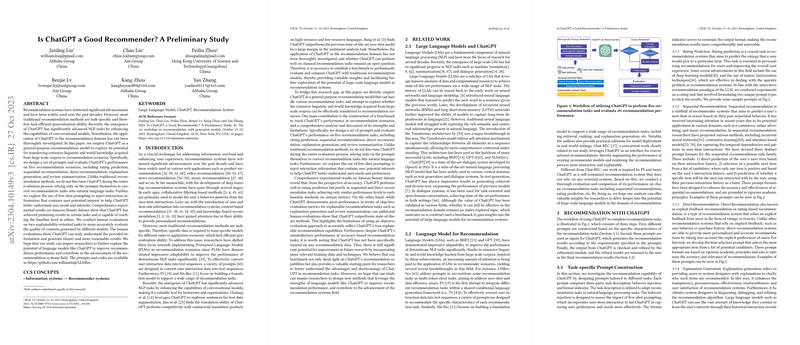Introduction
LLMs have taken the world by storm, revealing impressive capabilities across numerous domains of NLP. Yet, when it comes to recommending products or content to users, a field dominated by systems specifically tailored for such tasks, these versatile models face a stiff challenge. Researchers from various institutions have taken on the task of investigating if LLMs, particularly ChatGPT, can transfer their linguistic proficiency to the field of recommendations.
Methodology
The authors assessed ChatGPT's capacity to serve as a recommender by constructing a series of prompts that emulate typical recommendation scenarios. Their approach departed from traditional methods; rather than fine-tuning ChatGPT on recommendation-specific datasets, they relied solely on these prompts to transform recommendation tasks into language tasks. To test if ChatGPT could enhance its performance even further, they implemented few-shot prompting, a technique that inputs a small amount of interaction information to nudge the model towards the user's potential interests. The authors put this methodology to the test across several datasets, focusing on different types of recommendation scenarios.
Experimentation
A comprehensive experimental evaluation on the Amazon Beauty dataset highlighted the performance of ChatGPT across five recommendation tasks: rating prediction, sequential recommendation, direct recommendation, explanation generation, and review summarization. In terms of accuracy, the paper demonstrated that while ChatGPT showed promise on rating prediction tasks, its results were less encouraging for sequential and direct recommendation, often trailing behind conventional methods.
However, the paper found that standard objective metrics might not fully capture the quality of content generated by LLMs. Therefore, the researchers went a step further, conducting human evaluations to delve into the explainability aspect of the recommendations. These assessments revealed ChatGPT’s superior capability to produce clearer and more reasonable content, even when compared to outputs from state-of-the-art methods.
Conclusion and Prospects
The research uncovered that ChatGPT can indeed serve as a useful tool in certain recommendation contexts, particularly where explanations or summarization are involved. On the other hand, its performance in other recommendation tasks warrants further investigation. This paper marks just the beginning of what could be a transformative application of LLMs — to refine our digital experiences further not just through conversation but also through personalized recommendation systems. For those curious about the technical specifics and the nuances of the model's responses, the prompts and codes used during the paper are openly accessible on GitHub.
The findings lead us to believe that with continued research and adaptation, LLMs like ChatGPT could evolve into sophisticated recommenders, ultimately enhancing user experience across various platforms. As we move forward, the focus will be to bridge the gap between the semantic understandings of language and the subtle intricacies of user preferences. With fine-tuning and incorporation of more directed datasets, there’s potential for significant strides in the efficiency and accuracy of LLMs within recommendation systems.
